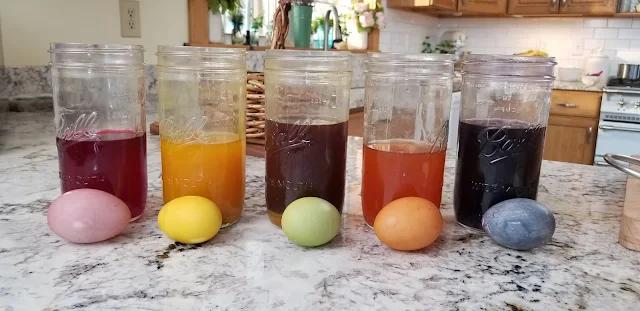Natural Easter Egg Plant Dyes
Of course you can raise chickens who will lay you beautiful eggs in shades of blue, green, pink, cream, brown and white...or you can try some of these easy, fun natural ways to dye your eggs.
Over the past few years, I've tried various things from the garden and pantry to dye eggs, so this year I tried a few new things, plus some I've done before.
I used duck eggs since they are white and take color better than brown eggs.
Natural Easter Egg Plant Dyes
What you Need |
- Beets/Beet Juice - Rose pink
- Carrots - Pale orange
- Yellow onion skins - Orange
- Turmeric - Yellow
- Spinach - Pale green
- Purple cabbage + Turmeric - Green
- Beet Tops/Greens - Pale blue
- Purple Cabbage -Blue
- Violets - Pale lavender
- Blueberries - Purple
Boil a kettle full of water. In the meantime, pour about 2 teaspoons of white vinegar into coffee mugs, add whatever you're using to dye the eggs, place an egg in each mug and cover with the boiling water.
Stir with a wooden chopstick occasionally, letting the liquid cool to room temperature (about 2 hours). Refrigerate overnight for a more vibrant color or remove the eggs when you have achieved the color you desire and let dry completely.
Once dry, rub a bit of cooking oil onto the surface of each egg with a cotton ball for a nice sheen.
And once you're done dyeing your eggs, give your chickens the vinegar water/veggie mixes. They will love them!
For ideas of other natural food dyes to create pretty pastel shades, read HERE.
For some deep, earth- and jewel-toned dye ideas, read HERE.
To learn how to create marbled eggs, read HERE.
For a helpful guide to which breeds lay colored eggs, read HERE.




























